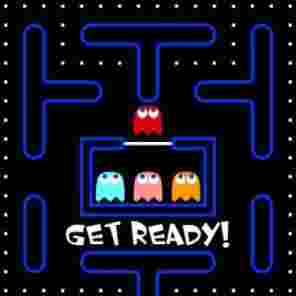Okay, let's be honest. When you hear "store management game," your mind probably jumps to bustling supermarkets or complex resource allocation. You likely don’t immediately think of Pacman. But bear with me. Games, even classic arcade ones, can offer surprisingly insightful lessons about resource management, customer satisfaction, and strategic decision-making – all key ingredients in running a successful virtual (or real-world!) store. And what better way to explore this than through the nostalgic lens of the Pacman 30th Anniversary game found?
This isn't about saying Pacman is a store management sim. It's about highlighting how the core mechanics can be interpreted through a business-oriented perspective, providing a fun and unconventional way to think about the challenges and rewards of running a store. Ready to see Pacman in a whole new light?
Gameplay: The Anatomy of a Pac-Business
At its heart, Pacman 30th Anniversary is a game about maximizing your intake while minimizing losses. Think of it this way:
- Pacman = Store Manager: You, the player, are the manager, tasked with strategically navigating the business landscape (the maze).
- Pac-Dots = Products/Inventory: Each dot represents an item available for sale in your store. Your goal is to acquire as many as possible.
- Power Pellets = Promotions/Deals: These offer a temporary boost, allowing you to aggressively acquire resources and potentially "eliminate competition" (more on that later).
- Ghosts = Competitors/Challenges: These are obstacles that directly threaten your progress. They represent competitors, unexpected expenses, or any other unforeseen challenges.
- Fruit = Bonuses/Special Opportunities: These are rare, high-value items that offer a significant boost to your score (profit).
The basic gameplay loop involves efficiently collecting Pac-Dots while avoiding or neutralizing the Ghosts. You need to plan your routes, anticipate your "competitors'" movements, and strategically use your "promotions" (Power Pellets) to your advantage.
Consider a specific scenario. You see a long line of Pac-Dots (products) but also notice a Blinky (competitor) lurking nearby. Do you aggressively go for the dots, risking an encounter? Or do you take a longer, safer route, sacrificing efficiency for security? This is a classic business decision: risk versus reward.
The game also emphasizes spatial awareness. You need to know the layout of your “store” (the maze), understand where the “customers” (Pac-Dots) are located, and be aware of the “traffic flow” (Ghost patterns). This is directly analogous to optimizing store layout to maximize product exposure and minimize congestion.
Tips for Strategic Maze Management (and Maybe Your Store Too!)
Okay, let's translate those arcade skills into actionable insights applicable to the world of store management:
- Strategic Route Planning (Inventory Management): Don't just blindly chase the nearest Pac-Dot. Plan your route strategically, prioritizing high-value areas and minimizing backtracking. In a real store, this translates to efficient inventory management, ensuring popular items are readily available and minimizing storage costs for slow-moving products.
- Risk Assessment (Competitive Analysis): Always be aware of the Ghosts' (competitors') locations and movements. Understand their patterns and anticipate their actions. This is essential for avoiding unnecessary risks and maximizing your score (profit). Similarly, in store management, constantly analyze your competition. Know their pricing strategies, product offerings, and marketing campaigns.
- Leverage Promotions (Power Pellets): Use the Power Pellets strategically, not just when you're in immediate danger. Time them to coincide with high-density areas of Pac-Dots to maximize their impact. Think of these as carefully timed promotions and discounts. Don't waste them on slow days; use them to capitalize on peak traffic.
- Seek Bonus Opportunities (Fruit): Keep an eye out for the fruit, which offer a significant score (profit) boost. These represent special opportunities like bulk discounts from suppliers or unexpected spikes in demand. Be prepared to capitalize on them when they arise.
- Adapt and Learn: Every game of Pacman 30th Anniversary is different. The Ghosts' behavior can vary slightly, and the layout of the dots can change. Learn from your mistakes, adapt your strategy, and constantly refine your approach. This is crucial for success in any dynamic environment, whether it's a virtual maze or a real-world store.
Conclusion: Pacman as a Metaphor for Success
While Pacman 30th Anniversary might not be a direct simulation of store management, it offers a compelling, albeit simplified, model of the core principles: resource allocation, risk management, and strategic decision-making. By understanding the game's mechanics through a business lens, we can gain a fresh perspective on the challenges and opportunities of running a successful "maze."
So, next time you're navigating the twists and turns of the Pacman maze, remember that you're not just chasing dots and running from ghosts. You're sharpening your business acumen, one pellet at a time. Now go forth and conquer that maze – and maybe even your own virtual or real-world store!




